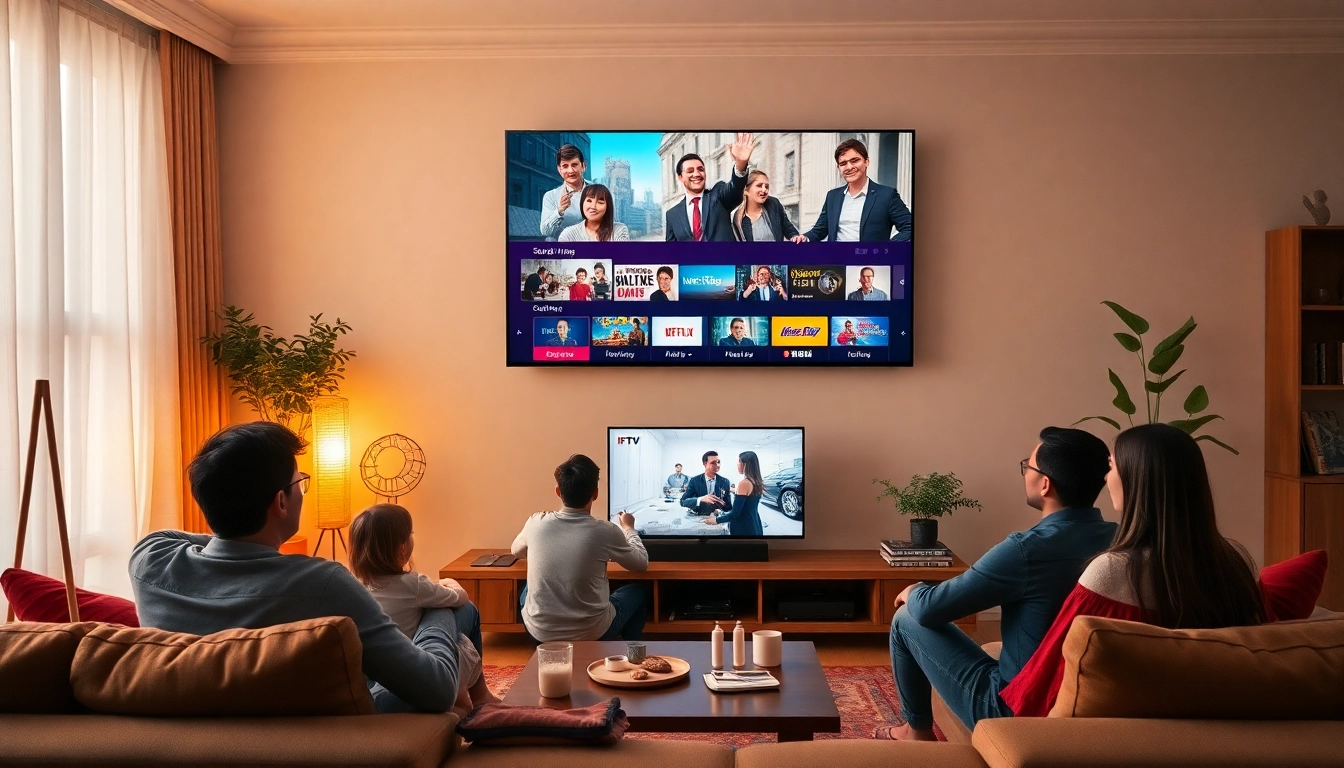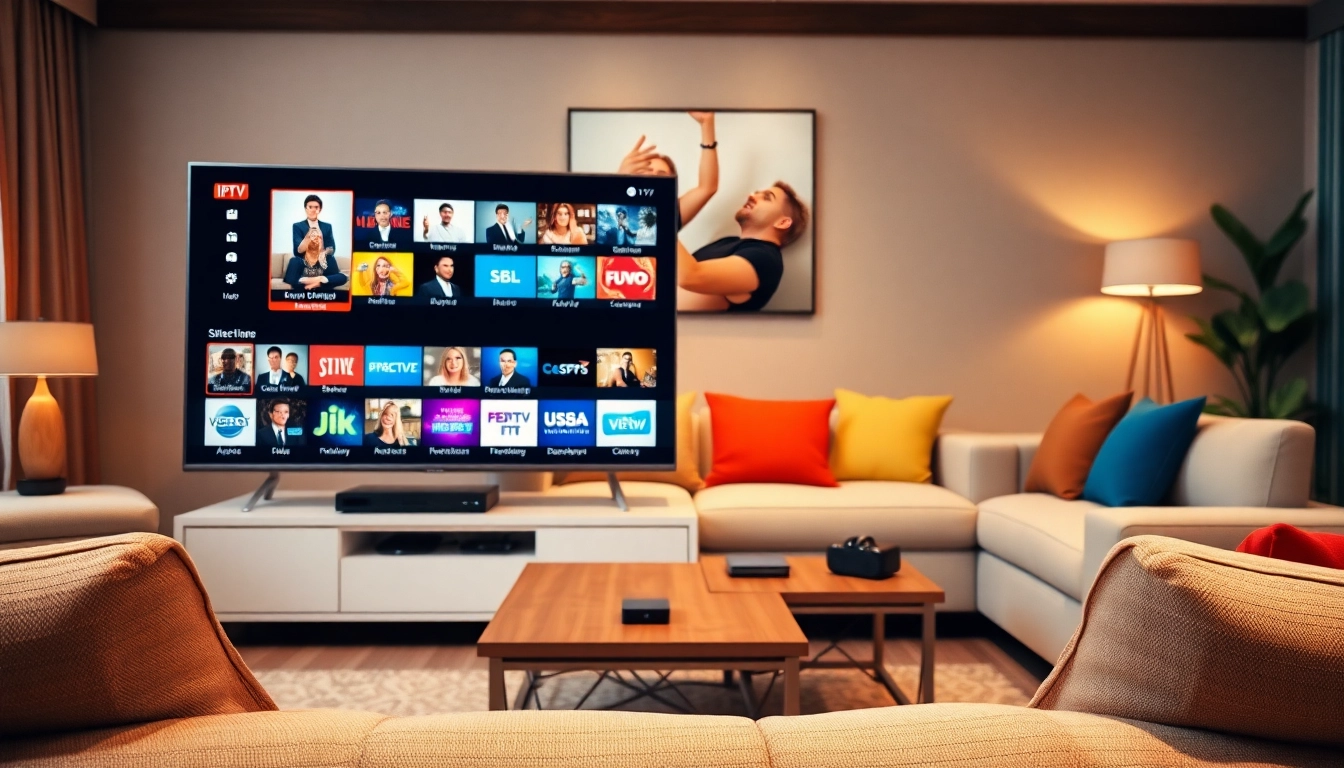Understanding the Live Stream Audience
The landscape of content consumption has undergone a profound transformation in recent years, with live streaming emerging as one of the most engaging forms of media. A significant contributor to the success of live streaming is the audience it attracts. Understanding the Live Stream Audience is a critical step for creators, marketers, and brands who aim to optimize their presence and engagement in this dynamic environment.
Demographics and Preferences
When analyzing the live stream audience, demographics play a pivotal role. Age, gender, location, and interests are key factors that shape how content is consumed. Research indicates that live streaming audiences predominantly consist of younger demographics, particularly those aged 18-34. This group is characterized by their preference for interactive and immersive content experiences.
In terms of gender, while historically, video game streaming platforms like Twitch saw a male-dominated audience, recent trends show increasing female viewership across various platforms. This shift has prompted content creators to diversify their topics and engagement strategies to cater to a more balanced viewership.
Location is another significant demographic factor. Live streaming becomes a global phenomenon, attracting viewers from around the world. Understanding regional preferences helps in tailoring content that resonates with specific audiences. Moreover, interests play a critical role in audience engagement. Topics encompassing gaming, music, cooking, and DIY crafts have surged in popularity, highlighting the need for creators to align their content with viewers’ passions.
Common Challenges Faced
Despite the potential for engagement, creators often face several challenges in connecting with their live stream audience. One of the most pressing issues is building a loyal community. With the vast array of options available, audiences can be fickle, making retention a struggle for many. Another hurdle is the tech-savvy nature of the audience, who often expect high production values and seamless interactions. Poor video quality, buffering issues, and unresponsive chat features can alienate viewers quickly.
Finally, maintaining consistent engagement over time can prove difficult. Creators must not only deliver high-quality content but also keep it fresh and engaging to prevent viewer fatigue. This requires ongoing creativity and an understanding of evolving audience preferences, which can fluctuate rapidly.
Engagement Metrics and Insights
To effectively engage the live stream audience, understanding engagement metrics is crucial. Key metrics include viewer count, watch time, chat engagement, and social shares. Viewer count provides a snapshot of interest, while watch time indicates how long viewers stay engaged, providing insights into content effectiveness.
Chat engagement serves as a direct line of communication between creators and viewers, allowing real-time interaction, which is vital for community building. Social shares and reactions can further amplify reach, as audience members share clips or highlights with their networks, contributing to organic growth.
Analyzing these metrics not only helps in immediate performance assessment but also in longer-term strategic planning. For instance, creators can identify which topics or formats yield the highest engagement and refine their content accordingly. Moreover, leveraging analytics tools can provide deeper insights into viewer behavior and preferences, enabling a more targeted approach to content creation.
Strategies for Enhancing Engagement
Creating an engaging live stream experience is essential for capturing and retaining your audience. Diverse strategies in content delivery, audience interaction, and promotional tactics can significantly enhance engagement and overall viewer satisfaction.
Interactive Elements to Capture Attention
Incorporating interactive elements into live streams is one of the most effective strategies for enhancing viewer engagement. Features such as polls, Q&A sessions, and live chats foster real-time interaction, making audiences feel involved. Polls can be used to gauge viewer opinions on specific topics, while Q&A sessions empower the audience by allowing them to ask questions directly.
Additionally, gamification can also play a role in engagement. Incorporating challenges, competitions, or incentives for audience participation not only increases interaction but also builds a community spirit. For instance, live trivia games or giveaways based on viewer participation can maintain high engagement levels throughout the stream.
Utilizing Social Media for Broader Reach
Social media platforms serve as vital tools for promoting live streams and reaching a broader audience. Engaging with potential viewers on platforms like Twitter, Instagram, and Facebook can generate anticipation and excitement about upcoming streams. These platforms can be used to share teasers, behind-the-scenes content, or countdown posts to build momentum.
Moreover, cross-promotion with other content creators or brands can also expand reach. Collaborations expose audiences to new content and can introduce new viewers to your channel. Utilizing targeted ads on social media platforms can further amplify visibility and attract specific demographic groups that show interest in your content type.
Incorporating Viewer Feedback Mechanisms
Engagement doesn’t stop when the stream ends; utilizing viewer feedback mechanisms can provide valuable insights and foster deeper connections. Post-stream surveys can help gather audience opinions on what worked well and what areas need improvement. Engaging with audience feedback shows that you value their opinions and that they play a role in content shaping.
Implementing regular feedback loops can also guide content strategy. By acknowledging viewer suggestions, creators can tailor future streams to better meet audience needs, ensuring that they remain invested in the channel’s growth and direction.
Content Planning for Your Live Stream Audience
Effective content planning is pivotal to the success of live streaming. The topics chosen, the format of the content, and the scheduling all contribute to how well an audience responds to a stream.
Choosing the Right Topics and Formats
Selecting the right topics is foundational to engaging your audience. Trending subjects resonate well, but it’s essential to match them with your expertise and branding. This alignment ensures authenticity, which is crucial for audience trust. Formats vary widely—from tutorials and interviews to panels and casual chats—with different formats appealing to diverse audience segments.
Experimenting with multiple formats can also help identify what works best for your audience. For example, a tutorial may attract viewers seeking knowledge, while a casual chat may attract those looking for entertainment. Flexibility in content type allows you to adapt to audience preferences dynamically.
Scheduling for Optimal Reach
The timing of a live stream is just as important as the content itself. Different audiences are active at different times, and understanding when your viewers are most likely to be available is crucial. Utilizing analytics from past streams can provide insights into peak viewing times. For instance, evenings or weekends might be optimal for working adults, while those in school may be available after class hours.
Consistency in scheduling is also key; viewers are more likely to return if they know when to expect new content. Establishing a regular streaming schedule can build anticipation and loyalty within your audience, creating a habit of tune-in behavior.
Promotional Tactics Before Going Live
Promotion is essential for maximizing live stream visibility and ensuring a full audience beforehand. Strategies include announcing upcoming streams through your existing channels, engaging with audience members on social media, and creating promotional content that teases the subject matter of the live session.
Creating engaging countdowns or behind-the-scenes snippets can generate buzz leading up to the event. Collaborating with influencers or leveraging guest appearances can also drive traffic as their following is likely to tune in, broadening your potential audience.
Technology and Tools for an Effective Stream
To deliver an exceptional live-streaming experience, having the right technology and tools is imperative. From streaming platforms to production equipment, each element must work harmoniously to produce high-quality content.
Platforms for Streaming Success
Choosing the right streaming platform is foundational to a successful live stream. Platforms such as Twitch, YouTube Live, Facebook Live, and Instagram Live each offer unique features and audience demographics. Each platform also has its strengths and must align with your content goals and audience engagement strategy.
For instance, Twitch is primarily known for gaming content, while YouTube caters to diverse interests spanning from vlogs to educational content. Understanding where your target audience resides online will help determine the best fit for your streaming needs.
Essential Equipment for Quality Production
Quality production equipment is another critical aspect of live streaming. A good-quality camera and microphone can significantly impact viewer experience. Audiences are likely to disengage if the video is pixelated or audio is poor. Investing in equipment that provides professional-level quality can enhance credibility and increase viewer retention.
Additionally, software such as OBS (Open Broadcaster Software) and Streamlabs can enhance production value. These tools enable overlays, scene changes, and other interactive elements that contribute to smoother storytelling during a live stream.
Analytics Tools to Measure Success
Analytics tools are indispensable in gauging the success of your streams. Platforms like YouTube Analytics and Twitch Insights offer data on viewer behaviors, including watch time, geographic locations, and engagement levels. Regularly monitoring these metrics can inform your content strategy, enabling you to adapt and enhance delivery for future streams.
Additionally, integrating third-party analytics software can further dissect audience habits, allowing for deeper insights into emerging trends, enabling creators to stay ahead of viewer expectations.
Best Practices for Post-Event Engagement
After a live stream ends, the focus should not simply shift to the next event. Establishing practices for post-event engagement is vital to fostering long-term relationships with your audience.
Following Up with Your Live Stream Audience
Following up with your audience is an often-overlooked practice that can cultivate loyalty and continued engagement. Sending thank-you messages, sharing key takeaways, or conducting follow-up surveys can show your audience that their feedback truly matters. This personalized touch can enhance community ties and retain viewer interest for future streams.
Moreover, utilizing email newsletters to inform your audience about the next live stream or related content can keep them engaged beyond the initial viewing experience.
Repurposing Content for Future Engagement
Repurposing content from your live streams is an effective strategy for maximizing engagement and extending the life of your content. This could include editing highlights into shorter clips for social media or turning the content into blog posts that delve deeper into discussed topics.
Not only does this provide more value to your existing audience, but it also helps attract new viewers who come across these snippets. Additionally, leveraging the content in various formats on different channels can reinforce your messaging and broaden reach.
Measuring Long-Term Relationship Building
Ultimately, successful live streaming is about building lasting relationships with your audience. Measuring long-term growth involves looking at metrics beyond just immediate engagement. Observing patterns such as viewer retention rates over time, repeated attendance at live events, and audience feedback can give you a clearer picture of relationship dynamics.
Additionally, fostering community through platforms like Discord or dedicated social media groups can help maintain engagement levels, providing spaces for continued interaction and discussions even when live streams are not happening.



